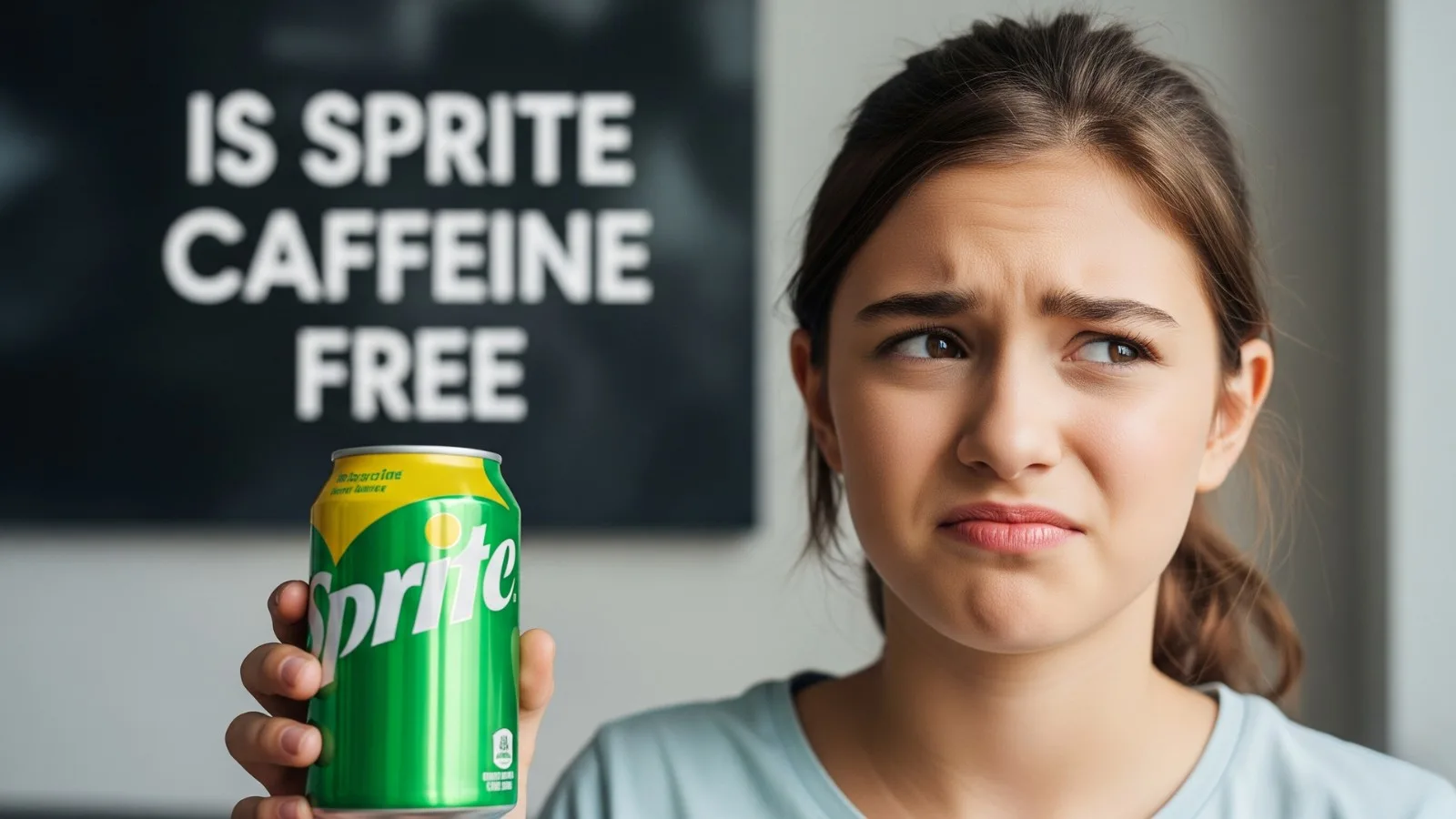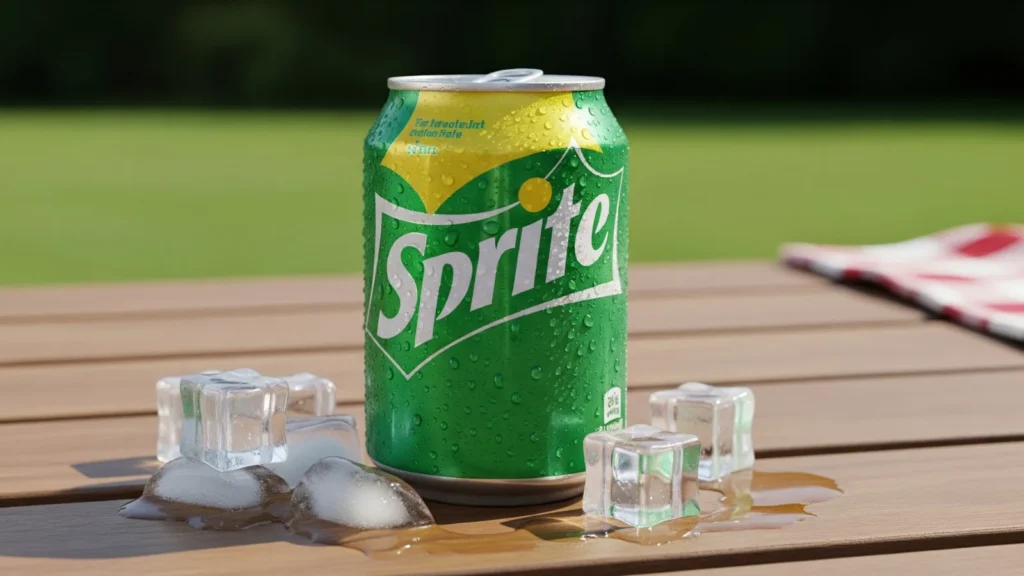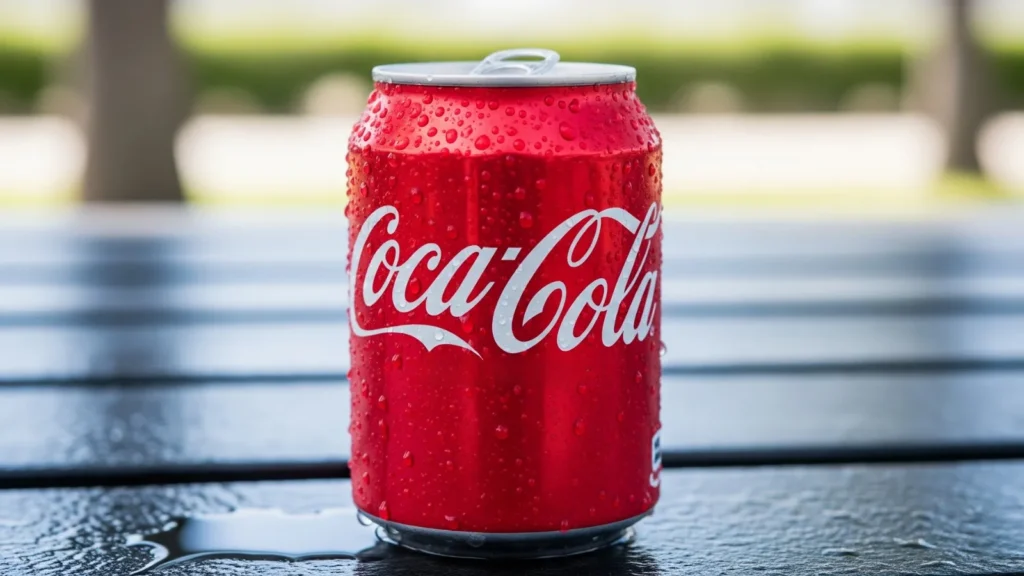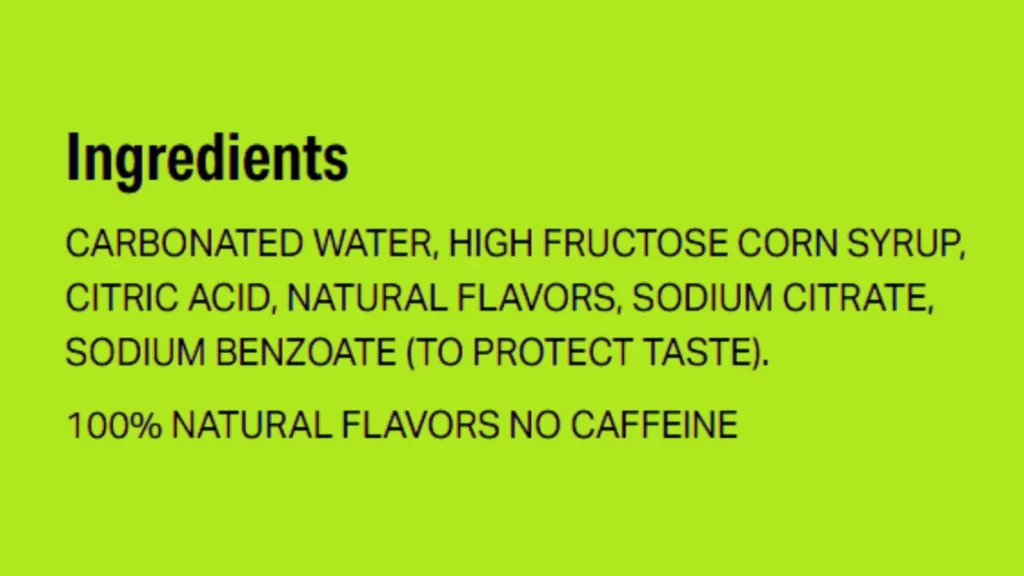Smart Choices Start with Real Facts.
Is Sprite Caffeine Free? Compared With Coke and Pepsi (2025)

- Introduction
- Understanding Sprite's Caffeine-Free Formula
- Sprite vs. Coke: A Detailed Caffeine Comparison
- Sprite vs. Pepsi: Complete Nutritional Analysis
- Health Benefits of Choosing Caffeine-Free Options
- Nutritional Value and Ingredient Analysis
- Expert Opinions on Caffeine-Free Beverages
- Practical Consumption Tips
- Alternative Caffeine-Free Beverages
- Common Mistakes When Choosing Sodas
- FAQ Section
- Conclusion
Introduction
When reaching for a refreshing soda, many health-conscious consumers wonder about caffeine content. The question “Is Sprite caffeine-free?” has become increasingly relevant as people seek to manage their daily caffeine intake.
Sprite contains zero milligrams of caffeine per 12-ounce serving. This makes it distinctly different from popular cola brands like Coca-Cola and Pepsi.
Understanding caffeine content across different soda brands helps consumers make informed choices. This guide examines Sprite’s caffeine-free formula and compares it with major cola brands.
Understanding Sprite’s Caffeine-Free Formula

The Science Behind Sprite’s Composition
Sprite contains citric acid, sodium citrate, and sodium benzoate as preservatives. Notably, it excludes caffeine from its ingredient list entirely.
The lemon-lime soda relies on natural citrus flavouring and carbonation for its crisp taste. Unlike colas, it doesn’t need caffeine for flavour enhancement.
Natural Energy from Sugar Content
While Sprite lacks caffeine, it contains approximately 38 grams of sugar per 12-ounce can. This provides about 140 calories primarily from high fructose corn syrup.
The sugar content can create temporary energy boosts through blood glucose elevation. However, this differs significantly from caffeine’s neurological stimulation effects.
Sprite vs. Coke: A Detailed Caffeine Comparison

Coca-Cola’s Caffeine Profile
Regular Coca-Cola contains 33.9 milligrams of caffeine per 12-ounce can. Diet Coke contains 46.3 milligrams per 12-ounce serving.
Caffeine in Coca-Cola enhances the complex flavour profile. It also provides the slight bitterness that balances the sweetness.
Key Differences in Formulation
Sprite emphasises clarity and simplicity with its lemon-lime taste. Coke pursues complexity through its secret blend of natural flavours and caffeine.
Both beverages contain similar calories (approximately 140 per 12 ounces). However, their effects on the body differ significantly due to caffeine presence or absence.
Sprite vs. Pepsi: Complete Nutritional Analysis

Pepsi’s Caffeine Composition
Pepsi contains 38.9 milligrams of caffeine per 12-ounce serving. Diet Pepsi contains 36.7 milligrams per 12-ounce bottle.
This makes Pepsi slightly higher in caffeine than regular Coca-Cola. However, it’s lower than Diet Coke.
Comparative Nutritional Breakdown
Per 12-ounce serving:
- Sprite: 0mg caffeine, 140 calories, 38g sugar, 65mg sodium
- Regular Pepsi: 38.9mg caffeine, 150 calories, 41g sugar, 30mg sodium
- Diet Pepsi: 36.7mg caffeine, 0 calories, 0g sugar, 35mg sodium
Sprite contains more than double the sodium of regular Pepsi. This comes from sodium citrate and sodium benzoate preservatives.
Health Benefits of Choosing Caffeine-Free Options
Sleep Quality Considerations
Choosing caffeine-free beverages like Sprite can significantly impact sleep quality. Caffeine has a half-life of 3-7 hours, meaning it can interfere with sleep even when consumed hours before bedtime.
Dr. Michael Grandner from the University of Arizona emphasises avoiding caffeine after 2 PM for better sleep. This makes Sprite ideal for afternoon or evening consumption.
Reduced Anxiety and Jitters
Individuals sensitive to caffeine often experience anxiety or jitters from stimulants. Sprite provides fizzy refreshment without these potential side effects.
This benefit extends to children, pregnant women, and adults managing anxiety disorders. They can enjoy Sprite without concerns about stimulant-related symptoms.
Nutritional Value and Ingredient Analysis
Complete Ingredient Breakdown

Sprite’s ingredients include carbonated water, high fructose corn syrup, citric acid, and natural lemon-lime flavours. Each component serves a specific purpose in taste and preservation.
Natural flavours derive from concentrated citrus oils. Citric acid works as both a flavour enhancer and a natural preservative.
Micronutrient Content
Sprite doesn’t provide significant vitamins or minerals. It contains small amounts of potassium from natural flavouring ingredients.
The beverage’s calories come entirely from carbohydrates (sugars). This provides quick energy without protein, fat, or fibre.
Expert Opinions on Caffeine-Free Beverages
Nutritionist Perspectives
Registered Dietitian Dawn Jackson Blatner suggests caffeine-free sodas can be part of balanced diets when consumed moderately. They offer psychological satisfaction without stimulant effects.
The Academy of Nutrition and Dietetics recognises that eliminating enjoyable foods often leads to unsustainable patterns. Caffeine-free options represent a reasonable compromise.
Pediatric Health Considerations
The American Academy of Paediatrics recommends limiting caffeine for children and adolescents. This makes Sprite preferable to colas for young consumers.
Dr. Sarah Thompson from the Children’s Hospital of Philadelphia notes caffeine can interfere with developing sleep patterns. Sprite eliminates these concerns while still requiring sugar moderation.
Practical Consumption Tips
Optimal Timing for Consumption
Since Sprite contains no caffeine, it can be consumed anytime without sleep concerns. This makes it suitable for evening meals or late-night gatherings.
Consider diluting Sprite with sparkling water to reduce sugar while maintaining fizz and flavour.
Portion Control Strategies
One 20-ounce bottle contains over 230 calories and 50 grams of sugar. This represents a significant portion of the daily recommended sugar intake.
Choose 12-ounce cans over larger bottles. Share larger servings or use Sprite as a mixer with water to reduce caloric density.
Alternative Caffeine-Free Beverages
Natural Alternatives
Consider naturally flavoured sparkling waters, herbal teas, or homemade citrus-infused water. These provide hydration and flavour with minimal calories.
Kombucha offers another caffeine-free option with probiotics and natural carbonation. Most varieties contain little to no caffeine.
Healthier Homemade Options
Create homemade lemon-lime sodas using sparkling water, fresh citrus juice, and natural sweeteners. This eliminates preservatives while maintaining refreshing qualities.
Common Mistakes When Choosing Sodas
Assuming Clear Sodas Are Caffeine-Free
Don’t assume clear sodas automatically lack caffeine. Some lemon-lime beverages and energy drinks may contain caffeine despite appearance.
Mountain Dew contains 54mg of caffeine per 12oz despite its clear appearance in some varieties. Always check ingredient labels.
Overlooking Sugar Content Impact
Many focus exclusively on caffeine while overlooking sugar’s impact. Even caffeine-free beverages affect blood sugar and energy levels.
Balance caffeine concerns with overall nutritional awareness for comprehensive beverage choices.
FAQ Section
Conclusion
Sprite stands out as a completely caffeine-free option, containing zero milligrams compared to Coca-Cola’s 34mg and Pepsi’s 39mg per 12-ounce serving.
This distinction makes Sprite ideal for individuals managing caffeine sensitivity or seeking better sleep quality. While sugar content requires moderation, the caffeine-free formula eliminates stimulant-related concerns.
The key to healthy soda consumption lies in moderation and awareness. Sprite’s caffeine-free nature simplifies beverage decisions for health-conscious consumers.







